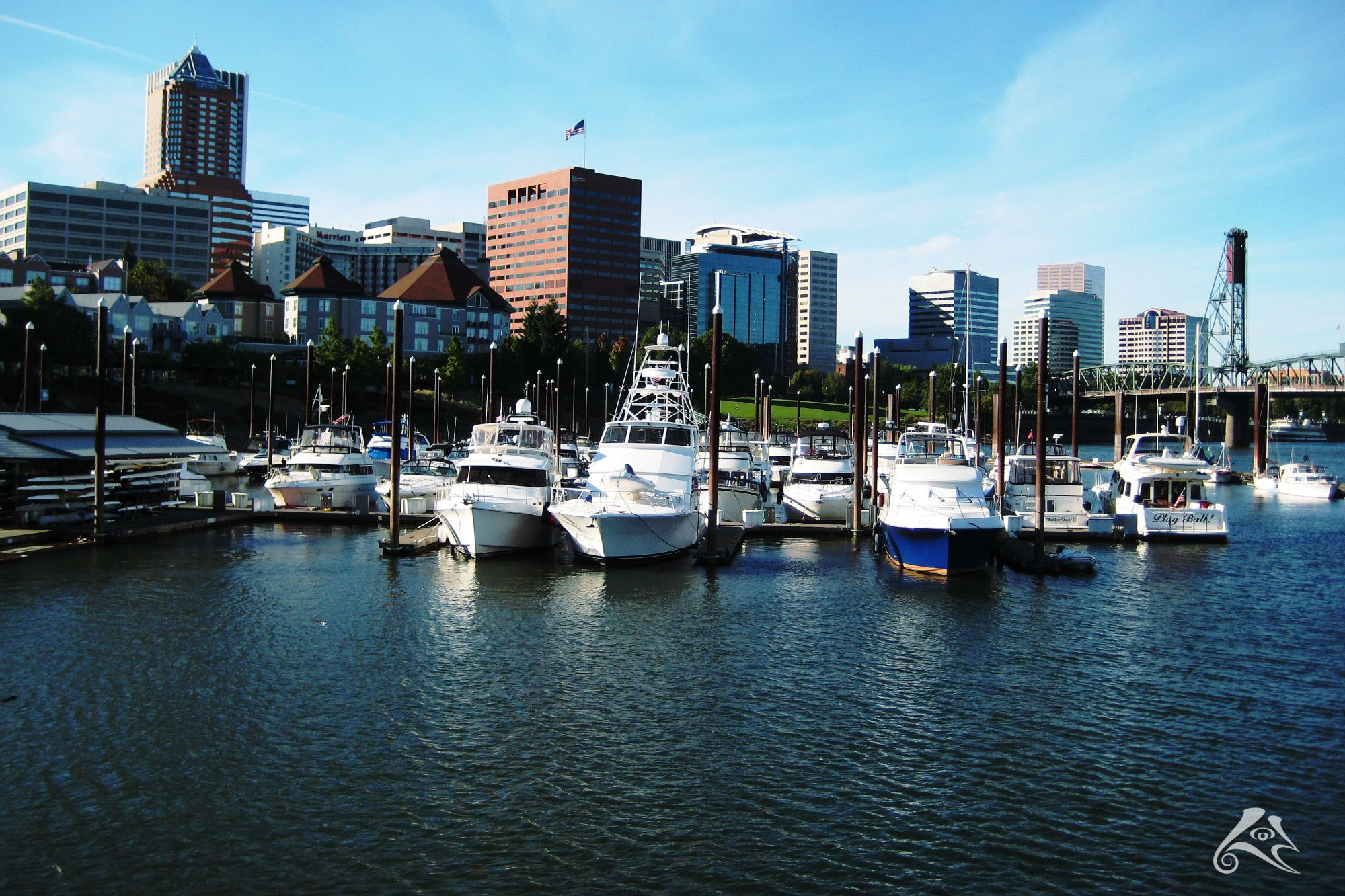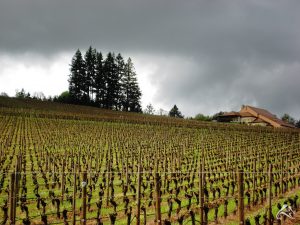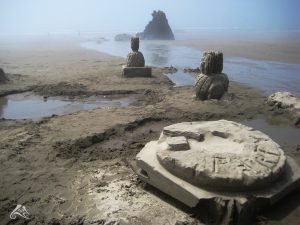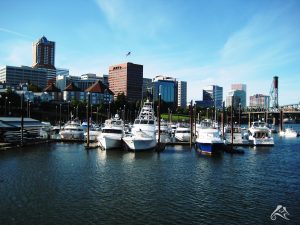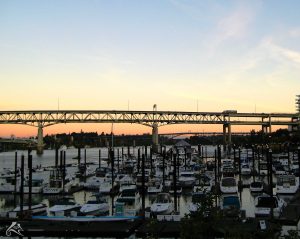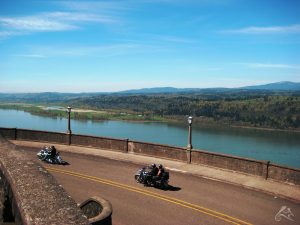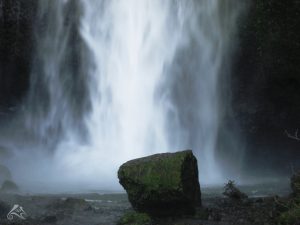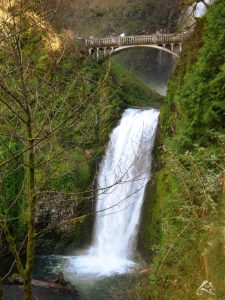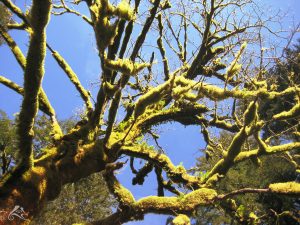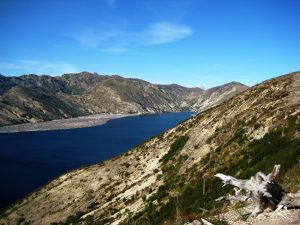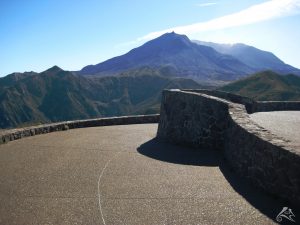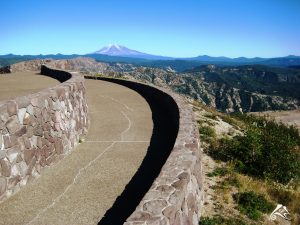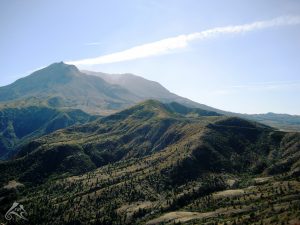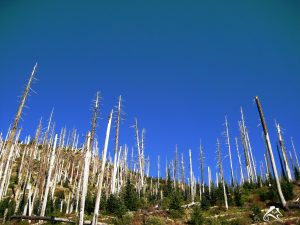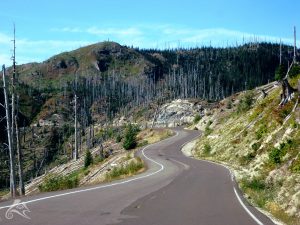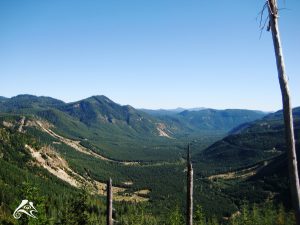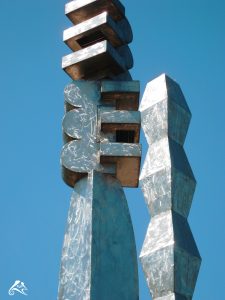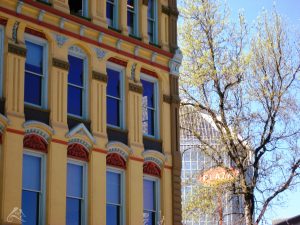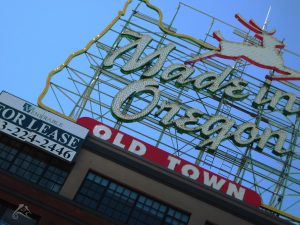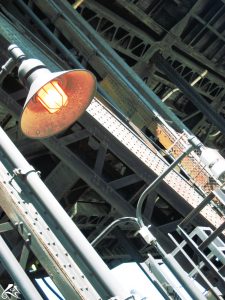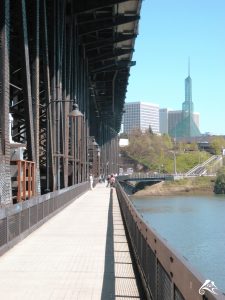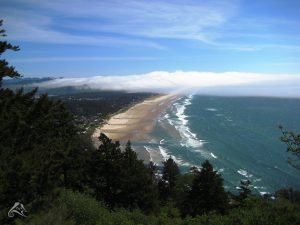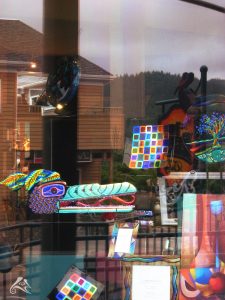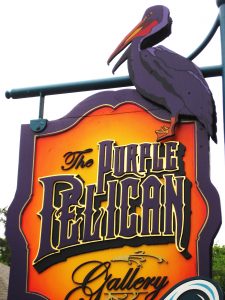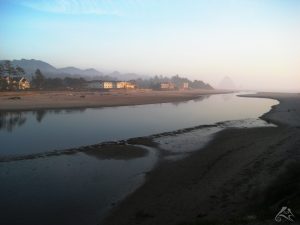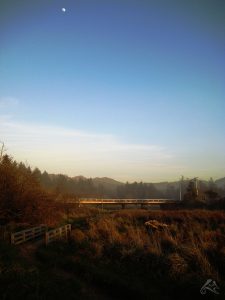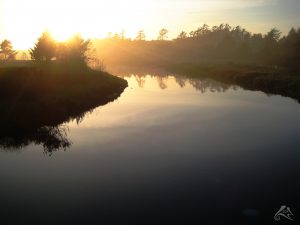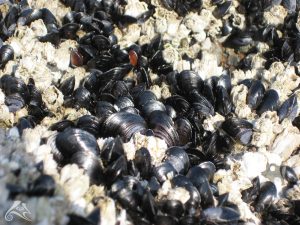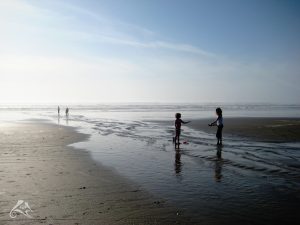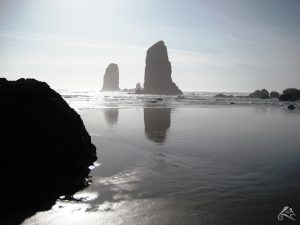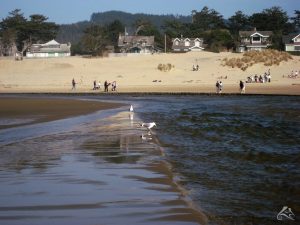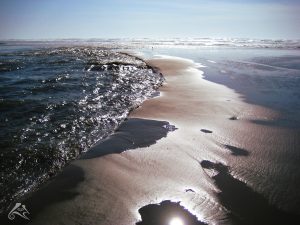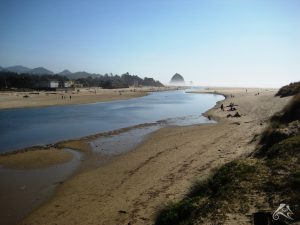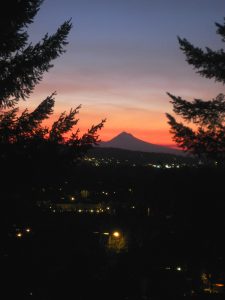While I was on one of my excessive “how can I change my life thinking hikes” somewhere in nowhere of the Sonoran Desert, north of Cave Creek Arizona, my hiking shorts where vibrating unexpectedly all of a sudden. In the first moment, when you really don’t think about your cellphone in such a lonely location, Scorpions, Snakes and other rattling insects materialize in your mind. The caller had a none Arizona area code when I pressed the green button, hoping its not one of these annoying telemarketers. “Helllooo???”
This call indeed interrupted radically all my desert meditation. I was offered a job – a really cool one on top 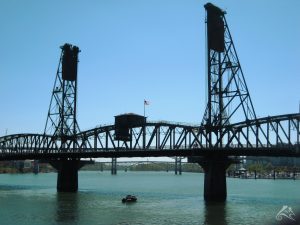 of it – in Portland Oregon. The pre-interview happened right there on the phone in the desert – while I was sitting down, unfortunately on a cactus of course. The needles still hurt several days later when I was sitting in an airplane to see that company. My first impression on a little walk around the Red Lion Hotel on the River – Jantzen Beach, Portland Oregon was: Wow! This is like Lake Constance in Germany. I felt home instantly! The main Interview went well. The engineering company, located in an old colonial brick building in Downtown Portland had a touch of vintage mixed with high tech enthusiasm. Back in Arizona again, I packed my most important belongings on the back of my Pickup Truck and hit the road towards Interstate 10. First destination: Los Angeles California into Interstate 5 all the way North. Listening to beautiful Chillout Music. What a cruise!
of it – in Portland Oregon. The pre-interview happened right there on the phone in the desert – while I was sitting down, unfortunately on a cactus of course. The needles still hurt several days later when I was sitting in an airplane to see that company. My first impression on a little walk around the Red Lion Hotel on the River – Jantzen Beach, Portland Oregon was: Wow! This is like Lake Constance in Germany. I felt home instantly! The main Interview went well. The engineering company, located in an old colonial brick building in Downtown Portland had a touch of vintage mixed with high tech enthusiasm. Back in Arizona again, I packed my most important belongings on the back of my Pickup Truck and hit the road towards Interstate 10. First destination: Los Angeles California into Interstate 5 all the way North. Listening to beautiful Chillout Music. What a cruise!
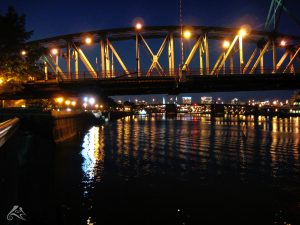 I have traveled to many cities in the United States, and every city has its own unique style and charm. But Portland Oregon is so far off any of all those other American towns with a flair of worldly but relaxed, cultured but not snobby, big city-like but small. Its like a fraction of Paris but in Switzerland with a close by Black Forest ending at a beach. Portland’s cityscape derives much of its character from the numerous bridges that span the Willamette River downtown, several of which
I have traveled to many cities in the United States, and every city has its own unique style and charm. But Portland Oregon is so far off any of all those other American towns with a flair of worldly but relaxed, cultured but not snobby, big city-like but small. Its like a fraction of Paris but in Switzerland with a close by Black Forest ending at a beach. Portland’s cityscape derives much of its character from the numerous bridges that span the Willamette River downtown, several of which 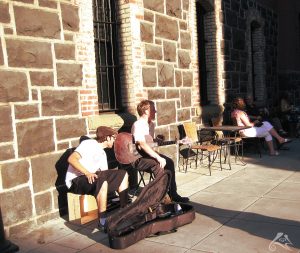 are historical landmarks, and Portland has been affectionately nicknamed „Bridgetown“ for many decades as a result. Downtown, there is coffee and beer enthusiasm. Portland is home to the most total breweries and independent microbreweries of any city in the world. People relax outside in front of all those little family owned coffee shops, bars and restaurants, and playing chess while chatting. Even if its raining. And it’s r
are historical landmarks, and Portland has been affectionately nicknamed „Bridgetown“ for many decades as a result. Downtown, there is coffee and beer enthusiasm. Portland is home to the most total breweries and independent microbreweries of any city in the world. People relax outside in front of all those little family owned coffee shops, bars and restaurants, and playing chess while chatting. Even if its raining. And it’s r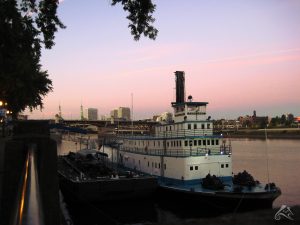 aining a lot in Portland Oregon. Especially all winter long, as what they say. But that’s OK. Nobody seems to be annoyed about it. This climate is ideal for growing roses. For more than a century, Portland has also been known as the „City of Roses”.
aining a lot in Portland Oregon. Especially all winter long, as what they say. But that’s OK. Nobody seems to be annoyed about it. This climate is ideal for growing roses. For more than a century, Portland has also been known as the „City of Roses”.
It was a beautiful sunny Saturday early afternoon, my first weekend in Oregon, when I decided to see the Pacific Ocean for the first time in my life. A quick look at Google Maps showed the route to Cannon Beach with a travel time of only one hour and twenty-two minutes. I hopped into my Ford F150 Pickup Truck and 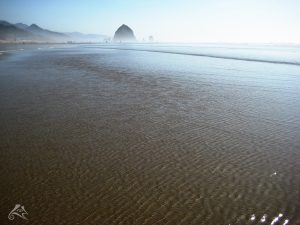 hit the road, which soon curves through the deep forests of pine trees…
hit the road, which soon curves through the deep forests of pine trees…
In September 1846, the US Navy schooner Shark hit land while attempting to cross the Columbia Bar, also known as the „Graveyard of the Pacific”. A few month later after a heavy winter storm, a cannon from the Shark washed ashore just north of Arch Cape, a few miles south of the community. The cannon, rediscovered in 1898, eventually inspired the todays name of this spectacular place to “Cannon Beach”. Right after I 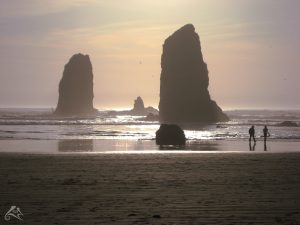 passed the last few forest trees of this mysterious forest road, the pacific ocean waters begin that abruptly, that I almost hit the sand like the US Navy schooner Shark back in 1846. Here I was – and walked and walked and walked until the sun went down behind those famous freestanding haystack rocks.
passed the last few forest trees of this mysterious forest road, the pacific ocean waters begin that abruptly, that I almost hit the sand like the US Navy schooner Shark back in 1846. Here I was – and walked and walked and walked until the sun went down behind those famous freestanding haystack rocks.
Shaken by an earthquake measuring 5.1 on the Richter scale, the north face of the tall symmetrical mountain St. Helens, 53 miles (85 km) northeast of Portland collapsed in a massive rock debris avalanche. In 1982, U.S. President Ronald Reagan and the United States Congress made the Mount St. Helens National Volcanic Monument, a 110,000 acre (445 km²) area around the volcano that is also a part of the Gifford Pinchot National Forest. On October 11, 2004, magma bubbles came to the top of the volcano , and a new lava dome was made on the first dome’s 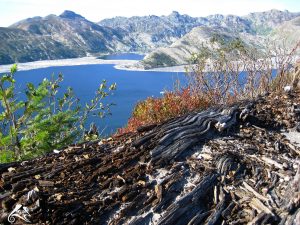 south side. This new dome grew throughout 2005 and into 2006. This breathtaking ongoing nature spectacle isn’t really politically belonging to Portland Oregon, but since it’s so close, I took a weekend to discover. Unlike my visit at Cannon Beach, where I poured half a gallon seawater out of my shoes after, this time, it was a pound of ashes, dust and lava stones.
south side. This new dome grew throughout 2005 and into 2006. This breathtaking ongoing nature spectacle isn’t really politically belonging to Portland Oregon, but since it’s so close, I took a weekend to discover. Unlike my visit at Cannon Beach, where I poured half a gallon seawater out of my shoes after, this time, it was a pound of ashes, dust and lava stones.
The Columbia River is the second largest river in North America, starting in northern Idaho and southeastern British Columbia, 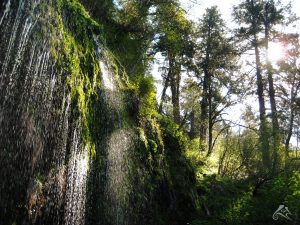 and traveling over 1,200 miles to the ocean. Up to 4,000 feet (1,200 m) deep, the Columbia River Gorge canyon stretches for over 80 miles (130 km) as the river winds westward through the Cascade Range forming the boundary between the State of Washington to the north and Oregon to the south. The Columbia Gorge National Scenic Area not only presents four major waterfalls to see, but also a year-round recreation, offering the best of outdoor activities including camping, hiking, biking, golf, whitewater rafting and kayaking, windsurfing and kiteboarding, boating, bird watching, photography, downhill and cross country skiing, snowboarding, snowshoeing… did I forget anything?
and traveling over 1,200 miles to the ocean. Up to 4,000 feet (1,200 m) deep, the Columbia River Gorge canyon stretches for over 80 miles (130 km) as the river winds westward through the Cascade Range forming the boundary between the State of Washington to the north and Oregon to the south. The Columbia Gorge National Scenic Area not only presents four major waterfalls to see, but also a year-round recreation, offering the best of outdoor activities including camping, hiking, biking, golf, whitewater rafting and kayaking, windsurfing and kiteboarding, boating, bird watching, photography, downhill and cross country skiing, snowboarding, snowshoeing… did I forget anything?
Yes – I almost forgot the Submarine! In Portland Downtown, there is a wonderful Science Center. OMSI is home to the U.S. Navy’s last non-nuclear, fast-attack submarine, the USS Blueback (SS-581). The Blueback was the first battle-ready class of submarines to use the teardrop hull. It was in official operation throughout the Pacific Ocean for 31 years. and The USS Blueback has served in the entertainment industry too! It appeared in the hit movie The Hunt for Red October and an episode of Hawaii Five-O and has been used as a location for a Discovery Channel documentary and various commercials.
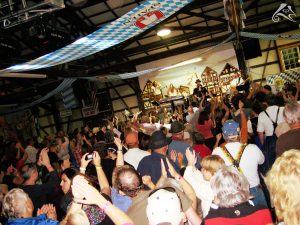 With all this fantastic things to see, one of the most important shouldn’t be left out: Real Fun! At Mt. Angel, a small city in Marion County, Oregon, United States, 37 miles south of Portland, 18 miles (29 km) northeast of Salem, Oregon, on Oregon Route 214, celebrates German Oktoberfest each year in September. The Mt. Angel Oktoberfest is the largest of its kind in the Pacific Northwest. Attendance grew from 39,000 in its first year, 1966, to 375,000. This Bavarian Style beer festival
With all this fantastic things to see, one of the most important shouldn’t be left out: Real Fun! At Mt. Angel, a small city in Marion County, Oregon, United States, 37 miles south of Portland, 18 miles (29 km) northeast of Salem, Oregon, on Oregon Route 214, celebrates German Oktoberfest each year in September. The Mt. Angel Oktoberfest is the largest of its kind in the Pacific Northwest. Attendance grew from 39,000 in its first year, 1966, to 375,000. This Bavarian Style beer festival 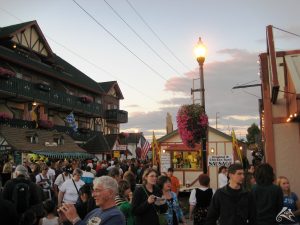 features sports tournaments and races, arts and crafts exhibits, a farmers market, community dinners featuring sausage and sauerkraut, a wide assortment food, games, and entertainment, and of course plenty of beer and wine gardens. This was also the grand finale of my summer in Portland. The company I started with in spring, turned out to be more like a scouts camp than a creative design firm. I realized that I ended up starving for the weekends, barely able to wait until Friday afternoon. Artists need space for their minds to flow. Of course, time restrictions are always necessary to match a customer’s schedule. However, if those timely tasks turn into a four-quarter-beat, true creativity fades away and no artist is able to meet an employer’s expectation. Mt. Angel Oktoberfest was my farewell party at the same time. Together with all the new friends I met during my wonderful time in Portland, we danced to the German band “Donaumusikanten” until three o’clock in the morning.
features sports tournaments and races, arts and crafts exhibits, a farmers market, community dinners featuring sausage and sauerkraut, a wide assortment food, games, and entertainment, and of course plenty of beer and wine gardens. This was also the grand finale of my summer in Portland. The company I started with in spring, turned out to be more like a scouts camp than a creative design firm. I realized that I ended up starving for the weekends, barely able to wait until Friday afternoon. Artists need space for their minds to flow. Of course, time restrictions are always necessary to match a customer’s schedule. However, if those timely tasks turn into a four-quarter-beat, true creativity fades away and no artist is able to meet an employer’s expectation. Mt. Angel Oktoberfest was my farewell party at the same time. Together with all the new friends I met during my wonderful time in Portland, we danced to the German band “Donaumusikanten” until three o’clock in the morning.

